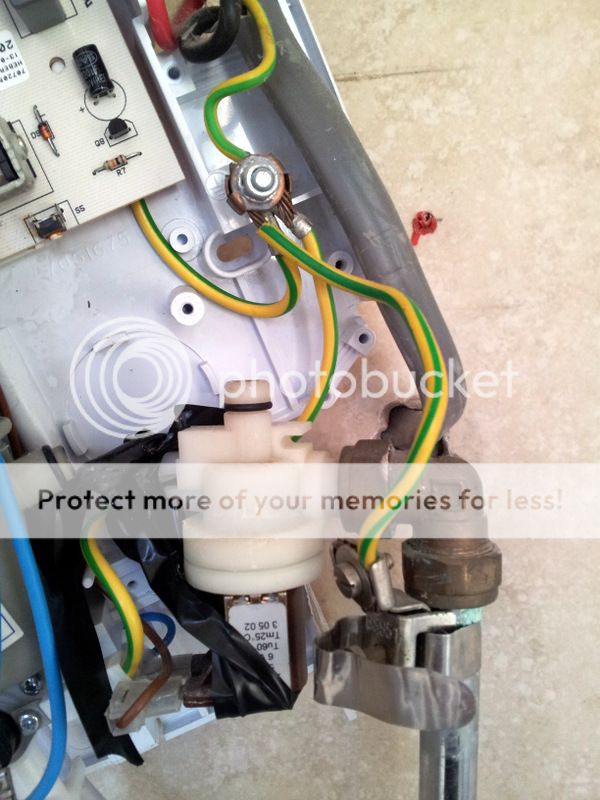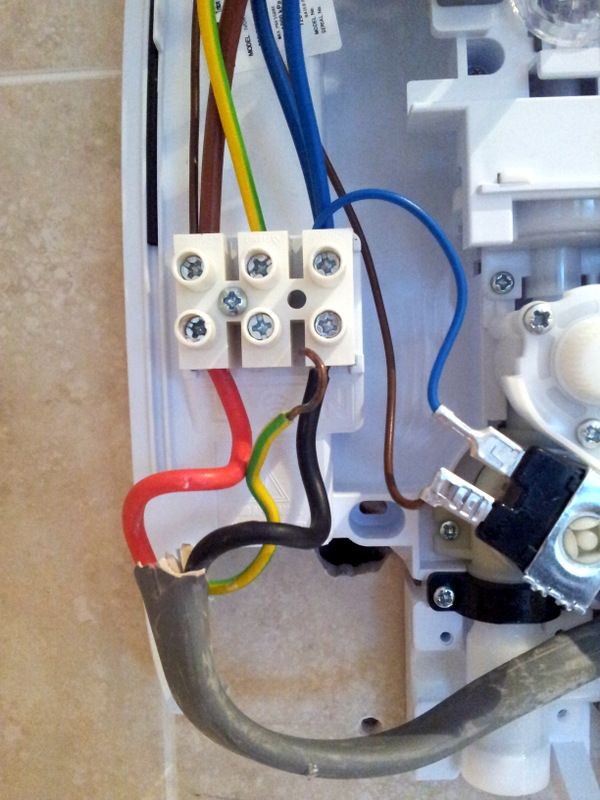Hi,
I'm in the process of replacing a Triton opal shower with a Triton ivory 4. I assumed the electrics woiuld be a simple swap over but the earthing on the 2 showers is very different.
On the new shower it simply seems to require the standard earth cable connecting along with the live and neutral into the terminal block whereas the older unit was earthed very differently including to the water inlet pipe
Can you confirm no additional earthing is needed on the replacement unit ?
Opal :- (ignore the electrical tape was just tping it up while disconnecting it all)

Ivory :-

Thought it best to check no additional earthing was needed on the new unit. Instructions dont seem to indicate so
Thanks in advance,
Mike.
I'm in the process of replacing a Triton opal shower with a Triton ivory 4. I assumed the electrics woiuld be a simple swap over but the earthing on the 2 showers is very different.
On the new shower it simply seems to require the standard earth cable connecting along with the live and neutral into the terminal block whereas the older unit was earthed very differently including to the water inlet pipe
Can you confirm no additional earthing is needed on the replacement unit ?
Opal :- (ignore the electrical tape was just tping it up while disconnecting it all)

Ivory :-

Thought it best to check no additional earthing was needed on the new unit. Instructions dont seem to indicate so
Thanks in advance,
Mike.

